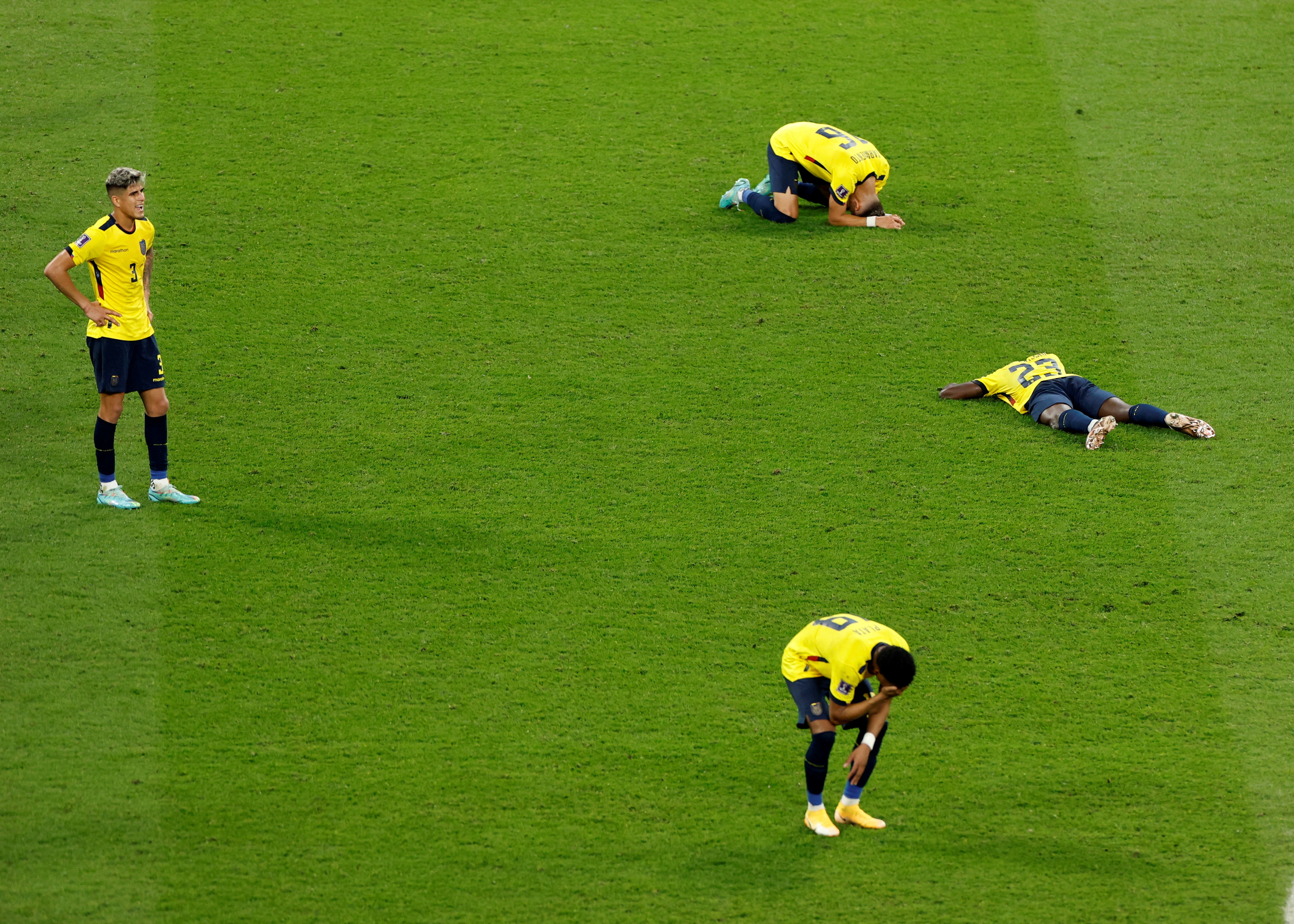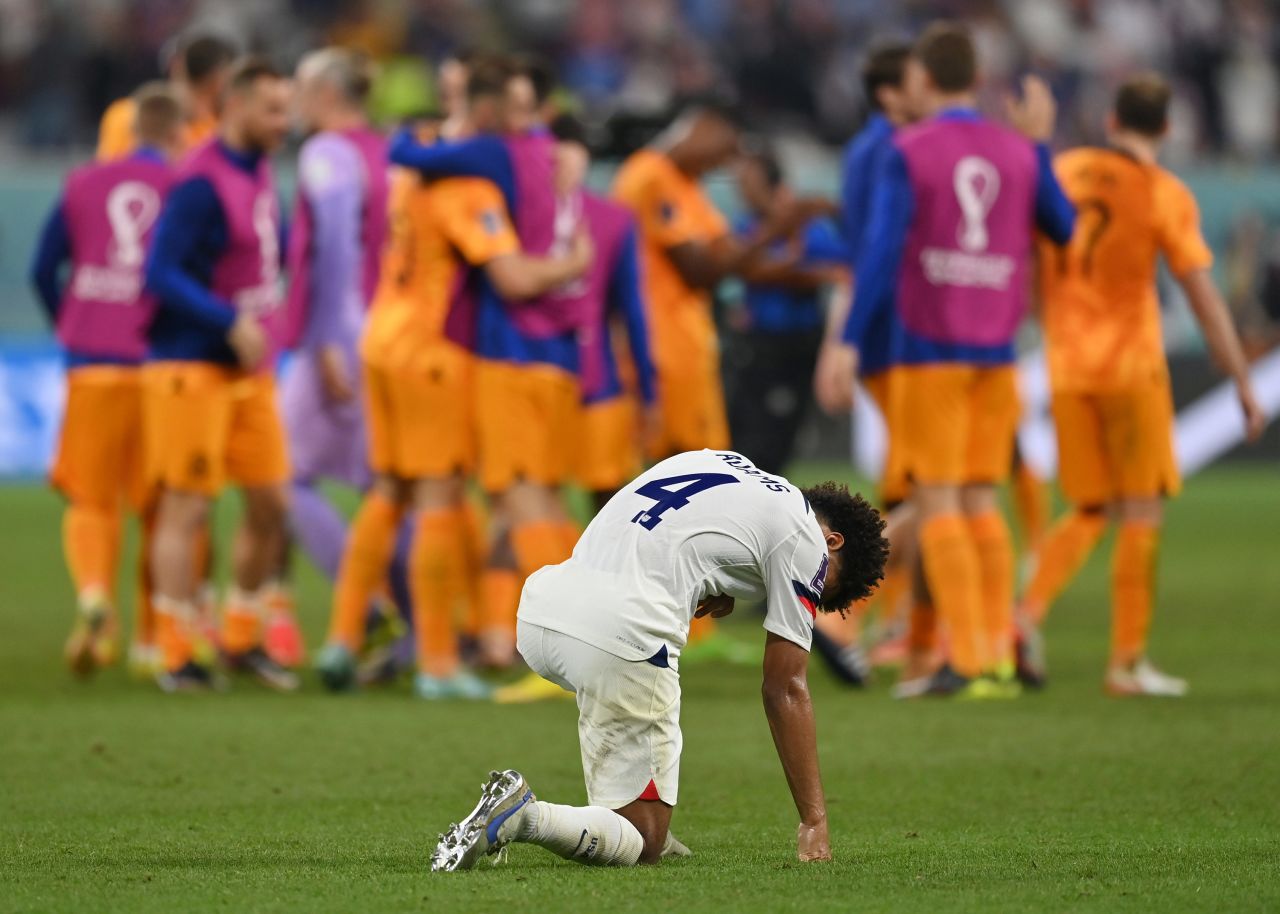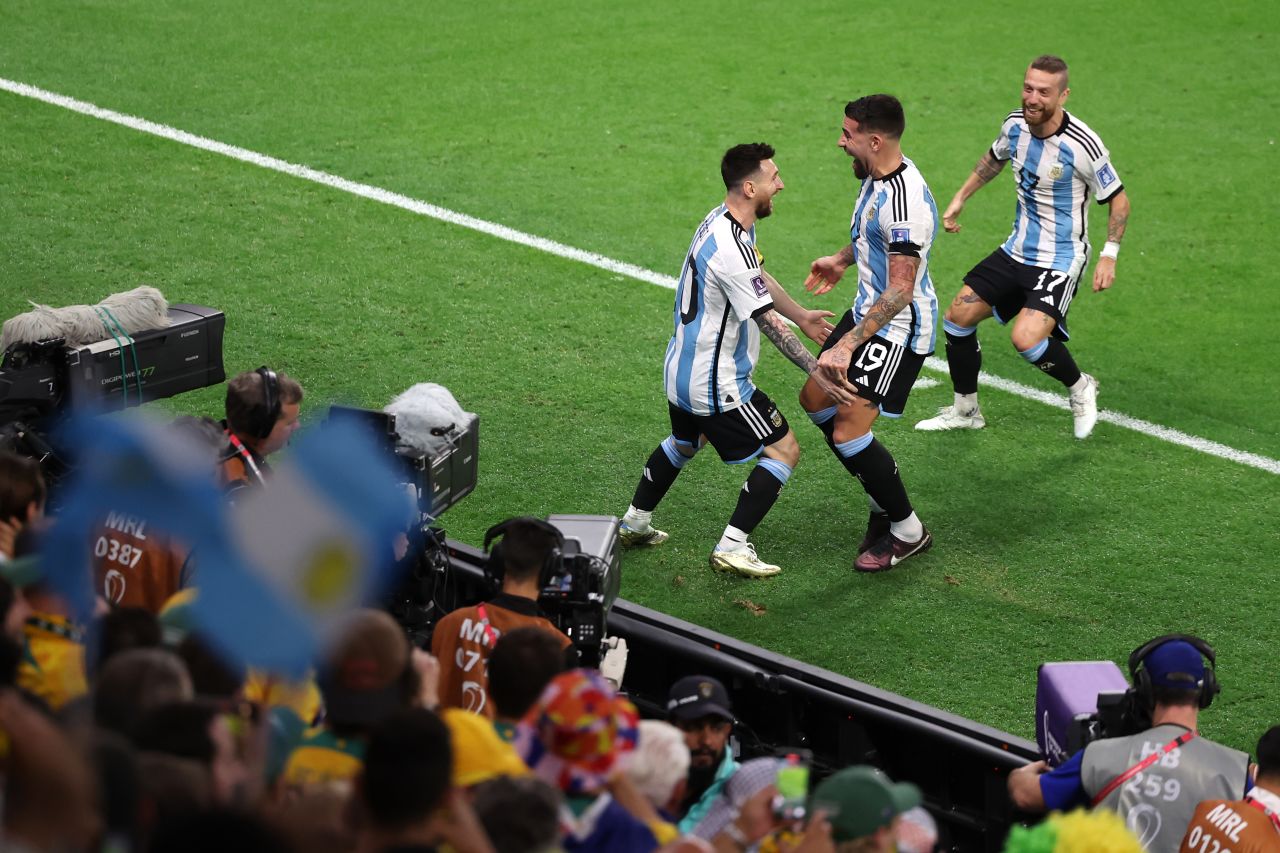Too many games, too little time, and Qatar itself: Why this World Cup 2022 is littered with injuries?

We examine the persistent injury problems that players have encountered both during the competition and in the lead-up to the 2022 Fifa World Cup in Qatar. The knockout stages of the tournament have just started.
Football players get hurt on the field. Nothing about this is novel. The 2022 World Cup in Qatar, on the other hand, seems to be rife with accidents, with almost no team coming out unscathed. Football fans have talked extensively about injuries during the buildup to the tournament. Numerous explanations exist for why the injury rate is so high.
World Cup: A busy schedule and worn-out players
A typical week for a modern football player might include four club matches in addition to their national obligations. Football is breaking advertising and viewership records, and more games mean more money, so the calendar is getting busier. The hectic schedule leaves little time for rest and recovery, despite advances in sports science and our understanding of players’ physiology.
A player’s health depends on rest and recovery. The body suffers greatly from the physical demands of playing top-level modern football. A game involves repeated hard contact, which causes players to become physically and mentally exhausted. Time is necessary for recovery, and that is exactly what is lacking.
For instance, in the past 2021 season, a Spanish midfielder called Pedri played in 70 official matches for Barcelona and Spain. Over the course of the year, that works out to more than one game per week. That number is closer to two games per week when one considers that the actual football season is just over nine months long. The games add up over the course of a football career, despite the fact that Pedri’s youth has allowed him to stay in shape despite the tremendous burden.
Ask Wayne Rooney, who made his debut at 16 years old but was out of gas by the time he was 29. He played a number of physically demanding positions, such as left back and central midfield, all the while experiencing aches and pains. At 37 years old, he now appears to be a grizzled war veteran with long since passed his playing days.
Qatar and its unique timetable
In addition to playing a lot, the World Cup this year has interfered with footballers’ regular schedules. It put additional strain on the already worn-out players because it took place in the middle of the football season. A player’s schedule is expanded by the World Cup. The rest of the current calendar has also been condensed because the world had to make time for this poorly planned tournament. In order to mainly prepare for the World Cup, players had to play more games quickly, followed by another.

In addition to the sheer volume of games, the players’ health is negatively impacted by disrupted routines. While volume increases the physical burden, a lack of a regular schedule makes it difficult to recover. The players are required to adjust their own schedules rather than sticking to a set schedule because they must frequently travel and play games at sporadic intervals (instead of the usual weekend fixture list).
In Qatar, the heat is not healthy.
Because it is simply too hot to play in the desert nation during the summer, when World Cups are typically held, the winter World Cup was chosen. When Qatar won the hosting bid in 2010 on dubious grounds, they made big claims about constructing air-conditioned stadiums and completely shielding spectators and footballers from the heat.
But as time went on, Fifa came to the conclusion that this was an impossible goal. Fully air-conditioning stadiums would be prohibitively expensive, both financially and environmentally, in terms of energy and infrastructure. Furthermore, it is impossible to air-condition the entire nation. A PR catastrophe for Fifa would be fans passing out in the street from heatstroke in the summer heat of 50 degrees. Despite the inconvenience, it was necessary to move the World Cup to the winter.
Qatar’s winter, however, is distinct from the winters in many other nations. Days continue to be swelteringly hot. At the beginning of the competition, training sessions had to be cancelled due to the intense heat. Players are more easily worn out by the heat, especially those from Europe and shady regions of America. Injury risk increases for players who are fatigued.
Fifpro holds a viewpoint.
Before the competition even started, the international players’ union expressed serious worries. The general secretary of Fifpro, Jonas Baer-Hoffmann, stated: “I believe the risk of injury, as well as fatigue, is higher over the next four weeks… That is what the science says.”
Darren Burgess, a consultant with Fifpro and also a former director of current high performance at Arsenal, claims that a higher percentage of players were absent from the tournament due to a lack of adequate recovery time. Additionally, he said that players who lack match fitness or are “underloaded,” like Kyle Walker or Harry Maguire, as well as those who have played a lot of games, are at a “really high risk” of injury in Qatar.
An unsafe Beautiful Game
World football is playing a risky game when players are given additional matches to add to their already full schedules. While more games increase revenue, long-term commercial interests have a negative impact on player health. Football injuries are on the rise, and well-known players are missing crucial matches and competitions. In the long run, fans are more likely to spend less time and money on the game when the best talent is denied due to fitness issues.

There may come a time when sports officials and organisers, who are infamously motivated by the desire for ever-increasing profits, will run their golden geese to death, killing the very thing that makes them money. Neymar’s injury in the opening match of the group stages, according to a poll, made fans less interested in watching Brazil.
Several well-known injuries will be reported during the 2022 Fifa World Cup.
The following is a list of well-known athletes who were sidelined due to injuries before or during the World Cup. This is not a complete list because numerous other players have sustained minor and major injuries as well.
Romelu Lukaku (Belgium), Neymar (Brazil), Reese James (England), Ben Chilwell (England), N’golo Kante (France), Paul Pogba (France), Karim Benzema (France), leg Lucas Hernandez (France), knee Timo Werner (Germany), and Giorgino Wijnaldum (foot) are some of the players with hamstring injuries (the Netherlands),
What controversial technology will be used at the FIFA World Cup in 2022?
The offside rule may be the most confusing aspect of football, but it has significantly changed the way we play. To prevent attacking players from perpetually camping out in front of the opposing goal, it serves this purpose.
FIFA has used “semi-automated offside technology” during this World Cup. Offsides have generated some debate among fans early in the tournament, despite the fact that it is meant to be an improvement over the current technology. They enlarge on the offside rule and contemporary technology.
What is the offside rule in football?
The offside rule may be the most confusing aspect of football, but it has significantly changed the way we play. In order to prevent attacking players from settling in front of the opposing goal, the offside rule was implemented.
This means that an attacking player cannot enter the space between the last defensive player (typically the goalkeeper) and also the rest of the defence before the ball is played. If an attacking player is found to be offside, the offending team forfeits possession of the ball and is given a free kick from the offending player’s position.
Football teams must adhere to the offside rule when attacking and defending. Knowing that attacking players are not allowed to position themselves behind the line until the ball is played, defensive lines maintain their shape and also move in unison along the same horizontal plane. In possession-based football, this is crucial because it enables defences to advance the entire team up the field by stepping out higher on the field.
On the other hand, timing forward runs so that they are either level with or behind the defensive line when the pass is played is one of the most crucial abilities for attackers. The offside rule thus rewards both attackers and defenders for their quickness, accuracy, and skill.
“A player is in an offside position if any part of the player’s head, body, or feet is in the opponents’ half (excluding the halfway line), and any part of the player’s head, body, or feet is closer to the opponents’ goal line than both the ball and the second-last opponent,” according to the International Football Association Board (IFAB), the organisation responsible for the rules of the game.
A player who is offside when the ball is played or touched by a teammate is also only penalised when they enter active play.
Football could deteriorate into a match in which the attacking team pushes as many players into the opposing team’s area as possible and spams long balls to them if the offside rule weren’t in place. The only way for attacking teams to gain an advantage would be to numerically outnumber defences in a small area of the field, as there would be no reason for defences to step up. Football would appear very differently.

How have offsides been determined thus far?
In the past, the two linesmen or lineswomen, one on each side of the field, have been in charge of calling offsides. They try to maintain a horizontal alignment with the defensive line (more technically, the current second-last player on defence). Although linesmen are still employed, technology now enables them to make decisions that are more precise and would be impossible to make with the naked eye.
After all, the rule mandates that the line official observe both the moment the pass is played and also the position of the attacking player concurrently. This can be very challenging if the pass is made from a deeper position on the field and the attacker is not in the same visual range.
As a result, after a particular play led to a goal-scoring action, the video assistant referee (VAR) was introduced specifically for offsides. The goal is, therefore, void if a player receives the ball while offside and scores. The line officials were also told to wait to call an offside violation until the goal-scoring move was finished. As a result, they would no longer be able to mistakenly declare an offside, depriving a team of a legitimate goal.
The English Premier League and most football competitions still use the older VAR technology that relied on reviewing replays, manually identifying the point of the last contact by the passer, and then freezing the frame to call offsides. The attacking player’s position and the position of the last remaining defender were then plotted on the frozen frame using horizontal lines and computers.
If the attacker’s line was also closer to the goal than the current defender’s, it was deemed offside. This approach is flawed right out of the gate. To begin with, a 2D image can never accurately capture real 3D space. Second, it can be very challenging to pinpoint the passer’s precise point of contact. The distinction between being onside and not being onside can easily be made by comparing two frames.
How does the new FIFA system operate?
According to FIFA, “the new technology uses 12 dedicated tracking cameras mounted beneath the stadium’s roof to track the ball and also up to 29 individual player data points, 50 times per second, calculating their exact position on the pitch.” All limbs and extremities pertinent for calling offsides are represented by the 29 data points that were gathered.”
Additionally, the Adidas “Al Rihla” official match ball for Qatar 2022 will have an inertial measurement unit (IMU) sensor to help with tight offside incident detection. The kick point can be identified with extreme accuracy thanks to the sensor in the centre of the ball, which transmits ball data to the video operation room 500 times per second.
The most precise offsides detection to date is made possible by the new technology, which combines limb tracking and ball tracking. With the aid of artificial intelligence, it builds a 3D model of what is happening at all times on a football field.
What’s the big deal, then?
Simply put, it seems like the system is too accurate. The World Cup offsides debate has so far focused on goals that were disallowed because of an inadvertent offside during the buildup. Take Argentina’s disallowed goal from Tuesday as an example. The offside call was dubious, to put it mildly.
If Martinez’s upper body had been a fraction of an inch behind where it was, the goal would have stood, and Argentina would have defeated Saudi Arabia by a score of 2-0 before the end of the first half. They ultimately lost the game against the inexperienced Arabians, but things could have gone very differently.

In fact, this issue existed even before VAR was first used. Arsene Wenger, the current FIFA director of global development and former manager of Arsenal, believes that a new offside rule must be implemented in order to encourage attacking, attractive football. In 2020, he said to L’Equipe, “I would like it to be that there is no offside as long as a [single] body part that a player can score with is in line with the defender. As a result of having to play higher up, an attacker may have an unfair advantage.”
Contrary to current regulations, which prohibit any portion of a player’s body from being ahead of the final defender, margin calls would no longer be permitted.
Edited by Prakriti Arora




